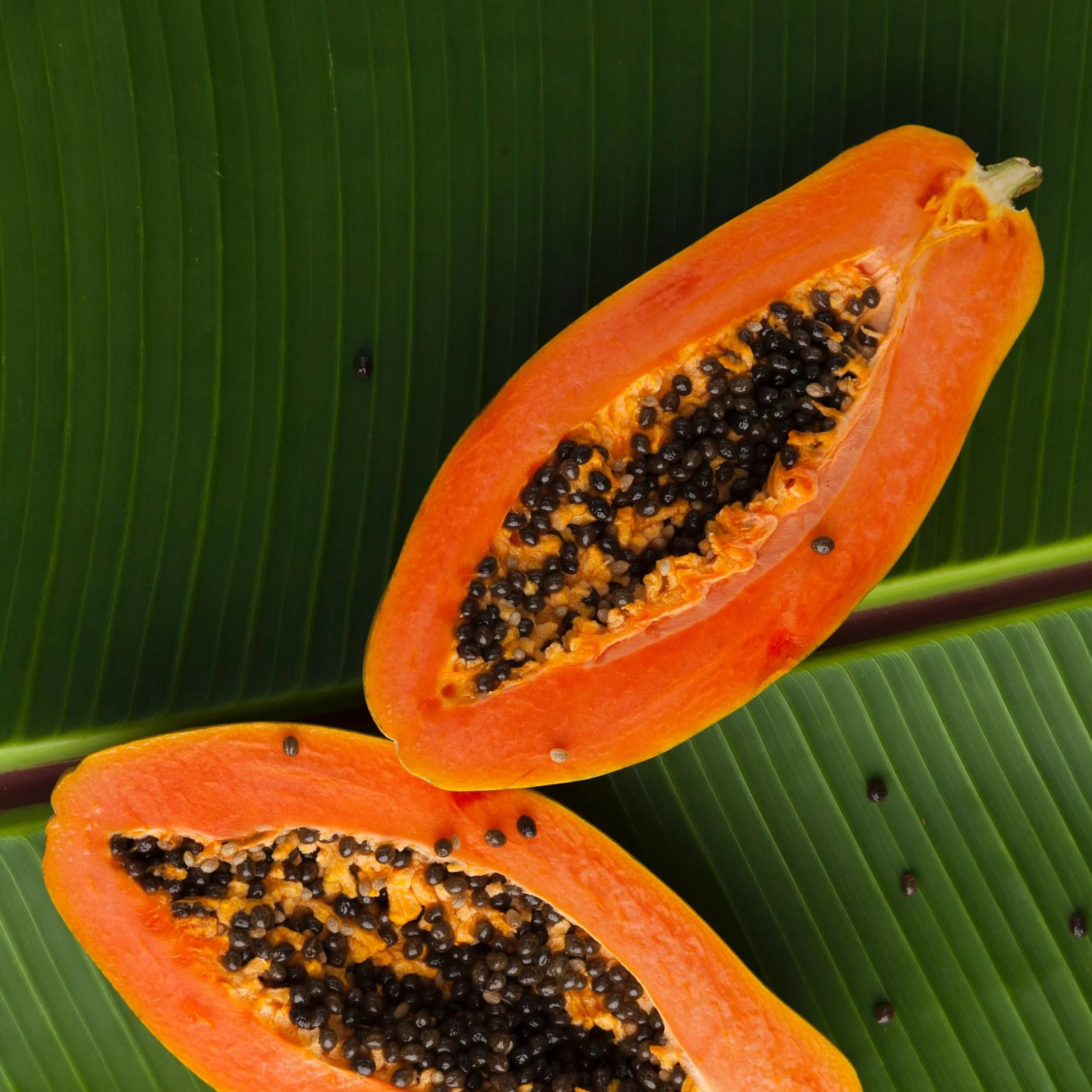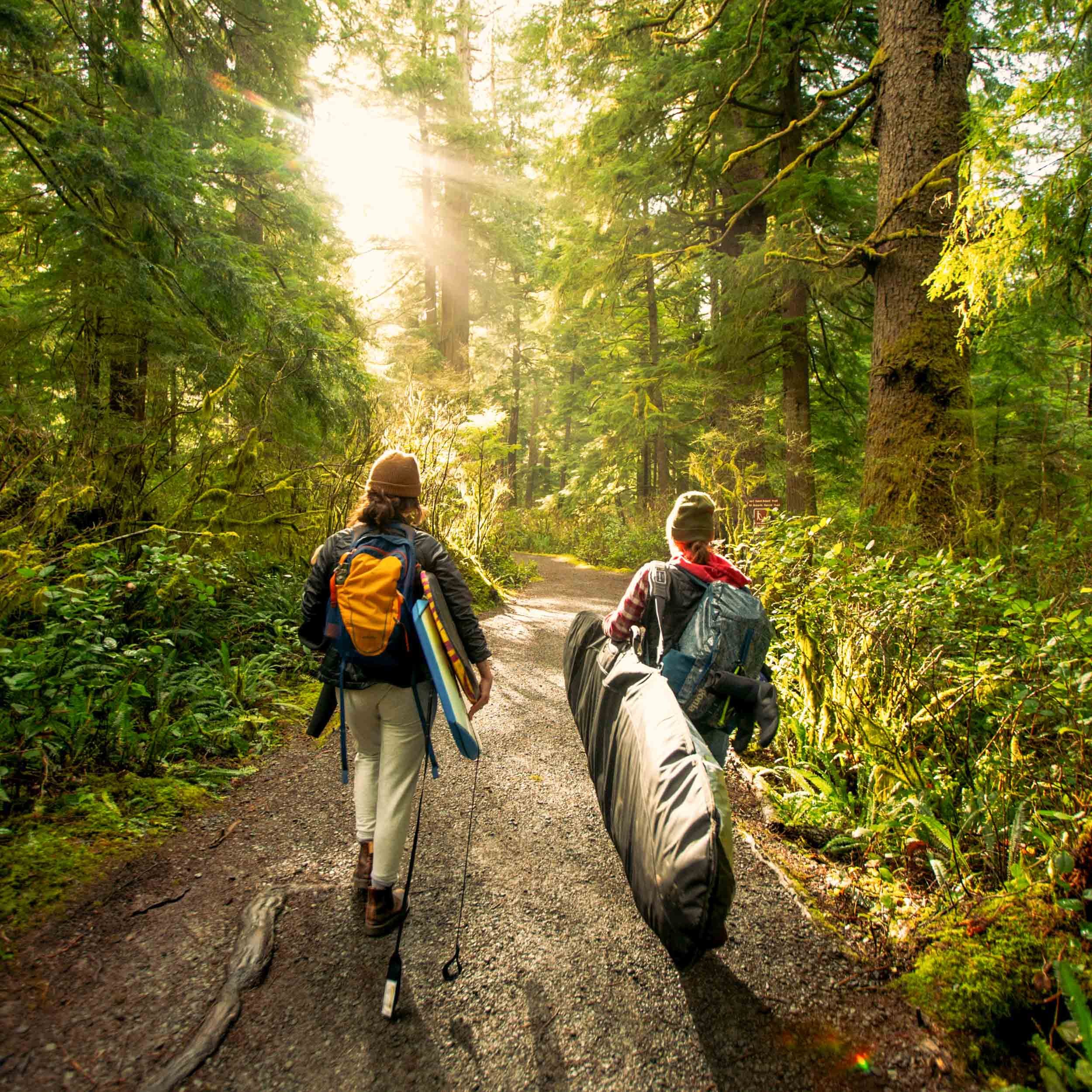The Benefits of Nature Connection

“Never let formal education get in the way of your learning.”
-Mark Twain
Let’s Explore a Little Deeper
We humans have been experiencing nature and waxing on about it since, well, basically forever. There’s something about this topic that makes us want to keep peeling back layers of the onion, only to find at its center a Rubik’s cube covered in a gnarled hairball. Despite the challenge, it’s a topic that’s kept indigenous peoples, scientists, writers, philosophers, and poets rapt for thousands of years. So what have we learned?
It feels f*cking amazing! That’s the short version anyway.
From a scientific perspective, there appears to be enough evidence to say that nature does more for our wellbeing than simply offering pretty decorations by the roadside (see the benefits below). When it comes to understanding the mechanisms, we’ve learned a few. Yet, it feels like it must have felt to be studying exercise science or sleep science thirty years ago. It’s early days.
My hope is that we’ll gain striking enough evidence that it motivates people to incorporate nature connection into their everyday lives, much in the same way we see nutrition, physical activity, and sleep for wellbeing. At the same time, every answer begs more questions, so it’s unlikely we’ll ever have the full picture. And this couldn’t be more fitting.
Nature, in it’s cheeky way, always leaves a bit of mystery on the table. Instead of fighting this, we can embrace it. In the absence of all the data and understanding, we can let the aliveness of our direct, felt experience guide us.
Get outside and see how it feels. Go inside yourself for a moment and scan the landscape. What’s happening? Notice the kinship between people, plants, fungi, and animals. Openly observe, ask questions, experiment. Share what you’ve found. Ask more questions. Let your curiosity burn brightly as you enjoy the ride.
Go ahead, unleash your inner Nature Junkie.
The Holistic Benefits
The Basics of Life
It’s obvious we can’t make it too far in life without food, water, and air. These essential ingredients flow from nature and are kind of a big deal around here. What about when we look beyond survival? Can nature connection actually help us thrive?
Mind
Stress - Spending time in nature, even just short walks amongst the trees, have consistently been found to improve several markers of stress, anxiety, and fatigue, while increasing positive emotions and mood compared to spending time in less natural environments (Lee et al., 2011; Mayer et al., 2009).
Anxiety & Depression - Having more greenspace nearby (e.g. trees, parks, etc.) is associated with less anxiety and depression. (Beyer et al., 2014; Nutsford et al., 2013; Stigsdotter et al., 2010).
Cognitive Performance - A number of studies have found that exposure to nature, through things as simple as a walk outside or having plants on your desk, is connected with improved cognitive performance for memory, attention, test scores, and even graduation rates (Berman et al., 2008; Taylor & Kuo 2009; Matsuoka 2010; Raanaas et al., 2011).
Body
Physical Activity - Because nature connection often involves physical activity outdoors, it has indirect benefits on our physical health. Because of the health importance of physical activity, this may have knock-on positive effects to help prevent common chronic diseases such as heart disease, diabetes, and obesity. Studies have shown that people who exercise outdoors (i.e. in nature) do so longer than if they were indoors, and that people who use parks and open spaces are three times more likely to meet the recommended levels of physical activity. (Giles-Corti et al., 2005; Kerr et al., 2012).
Immunity - Research in Japanese men found that walking for a couple hours in a forest significantly increased immunity (by increasing natural killer cell count and activity) compared to walking in a largely commercial city setting. Importantly, they found that the increased immune effect lasted one week, and even one month after the initial walk (Li et al., 2008).
Soul
Community - People with more greenspace in their local environment feel less lonely and experience less shortage of social support (Maas et al., 2009). Some research has also found that areas with more greenspace have less crime (Kuo & Sullivan, 2001). From the studies, it appears that this relationship may be indirect. For example, greenspace may entice people to get outside, and as a result they end up chatting with friends and neighbors, which helps create a sense of community, while also keeping a watchful eye on the place.
Happiness - Strong nature relatedness, which is a rating scale used by researchers to determine how connected we are to nature, has proven to be a strong predictor of many indicators of Happiness. In other words, the more exposure to nature we have, the more likely we are to be happy (Zelinski & Nisbet et al., 2014).
Kinship - The emotional bond between people and animals has been shown to enhance wellbeing both physiologically and psychologically (Beck & Meyers, 1996). Beyond animal companionship, social ecologist Stephen Kellert (1997) reminds us that deep emotional connection can be derived from many aspects of nature in our landscapes, whether it’s “A potted plant, a garden shrub, a backyard tree, a nearby river, a local forest…”
Planet
Sustainability - Increased nature relatedness has been found to be a powerful predictor of environmental concerns and more sustainable behaviors (Nisbet et al., 2009).
Temperature Control - Cities tend to be warmer than surrounding greenspaces, which creates what is called the heat island effect. Parks generally provide a cooling effect not only locally in the park, but also to surrounding built environments (Nowak & Heisler, 2010). This may help provide a buffer during life-threatening heat waves as well as offsetting the need for energy to run cooling systems in nearby buildings.
Air Quality - Trees help remove air pollution by providing a resting place for particles on their leaves and also by absorbing gaseous pollution through their leaves. Researchers calculated that in one year, trees removed 17.4 million tons of air pollution across the U.S., which prevented 850 human deaths and 670,000 cases of acute respiratory symptoms. (Nowak et al., 2014).
The Rabbit Hole.
(More resources just in case you want to geek out.)
References
Beck, A. M., & Meyers, N. M. (1996). Health enhancement and companion animal ownership. Annual review of public health, 17, 247–257. https://doi.org/10.1146/annurev.pu.17.050196.001335
Berman, M. G., Jonides, J., & Kaplan, S. (2008). The cognitive benefits of interacting with nature. Psychological science, 19(12), 1207–1212. https://doi.org/10.1111/j.1467-9280.2008.02225.x
Beyer, K. M., Kaltenbach, A., Szabo, A., Bogar, S., Nieto, F. J., & Malecki, K. M. (2014). Exposure to neighborhood green space and mental health: evidence from the survey of the health of Wisconsin. International journal of environmental research and public health, 11(3), 3453–3472. https://doi.org/10.3390/ijerph110303453
Giles-Corti, B., Broomhall, M. H., Knuiman, M., Collins, C., Douglas, K., Ng, K., Lange, A., & Donovan, R. J. (2005). Increasing walking: how important is distance to, attractiveness, and size of public open space?. American journal of preventive medicine, 28(2 Suppl 2), 169–176. https://doi.org/10.1016/j.amepre.2004.10.018
Kellert, S.R. (1997). Kinship to Mastery: Biophilia in Human Evolution and Development. Island Press.
Kerr, J., Sallis, J. F., Saelens, B. E., Cain, K. L., Conway, T. L., Frank, L. D., & King, A. C. (2012). Outdoor physical activity and self rated health in older adults living in two regions of the U.S. The international journal of behavioral nutrition and physical activity, 9, 89. https://doi.org/10.1186/1479-5868-9-89
Kuo, F. E., & Sullivan, W. C. (2001). Environment and Crime in the Inner City: Does Vegetation Reduce Crime? Environment and Behavior, 33(3), 343–367. https://doi.org/10.1177/0013916501333002
Lee, J., Park, B. J., Tsunetsugu, Y., Ohira, T., Kagawa, T., & Miyazaki, Y. (2011). Effect of forest bathing on physiological and psychological responses in young Japanese male subjects. Public health, 125(2), 93–100. https://doi.org/10.1016/j.puhe.2010.09.005
Li, Q., Morimoto, K., Kobayashi, M., Inagaki, H., Katsumata, M., Hirata, Y., Hirata, K., Suzuki, H., Li, Y. J., Wakayama, Y., Kawada, T., Park, B. J., Ohira, T., Matsui, N., Kagawa, T., Miyazaki, Y., & Krensky, A. M. (2008). Visiting a Forest, but Not a City, Increases Human Natural Killer Activity and Expression of Anti-Cancer Proteins. International Journal of Immunopathology and Pharmacology, 117–127. https://doi.org/10.1177/039463200802100113
Maas, J., van Dillen, S., Verheij, R. A., & Groenewegen, P. P. (2009). Social contacts as a possible mechanism behind the relation between green space and health. Health & place, 15(2), 586–595. https://doi.org/10.1016/j.healthplace.2008.09.006
Matsuoka R.H. (2010). Student performance and high school landscapes: Examining the links. Landscape and Urban Planning, 97(4), 273-282. https://doi.org/10.1016/j.landurbplan.2010.06.011
Mayer, F. S., Frantz, C. M., Bruehlman-Senecal, E., & Dolliver, K. (2009). Why Is Nature Beneficial?: The Role of Connectedness to Nature. Environment and Behavior, 41(5), 607–643. https://doi.org/10.1177/0013916508319745
Nisbet, E. K., Zelenski, J. M., & Murphy, S. A. (2009). The Nature Relatedness Scale: Linking Individuals’ Connection With Nature to Environmental Concern and Behavior. Environment and Behavior, 41(5), 715–740. https://doi.org/10.1177/0013916508318748
Nowak, D.J., Heisler, G.M. (2010). Air Quality Effects of Urban Trees and Parks. Ashburn, VA: National Recreation and Parks Association. 6 p.
Nowak, D.J., Hirabayashi, S., Bodine, A., Greenfield, E. (2014). Tree and forest effects on air quality and human health in the United States. Environmental Pollution, 193, 119-129. https://doi.org/10.1016/j.envpol.2014.05.028
Nutsford, D., Pearson, A. L., & Kingham, S. (2013). An ecological study investigating the association between access to urban green space and mental health. Public health, 127(11), 1005–1011. https://doi.org/10.1016/j.puhe.2013.08.016
Raanaas, R. K., Evensen, K. H., Rich, D., Sjøstrøm, G., & Patil, G. (2011). Benefits of indoor plants on attention capacity in an office setting. Journal of Environmental Psychology, 31(1), 99–105. https://doi.org/10.1016/j.jenvp.2010.11.005
Stigsdotter, U. K., Ekholm, O., Schipperijn, J., Toftager, M., Kamper-Jørgensen, F., & Randrup, T. B. (2010). Health promoting outdoor environments--associations between green space, and health, health-related quality of life and stress based on a Danish national representative survey. Scandinavian journal of public health, 38(4), 411–417. https://doi.org/10.1177/1403494810367468
Taylor, A. F., & Kuo, F. E. (2009). Children with attention deficits concentrate better after walk in the park. Journal of attention disorders, 12(5), 402–409. https://doi.org/10.1177/1087054708323000
Zelenski, J. M., & Nisbet, E. K. (2014). Happiness and Feeling Connected: The Distinct Role of Nature Relatedness. Environment and Behavior, 46(1), 3–23. https://doi.org/10.1177/0013916512451901
Share Your Microdose with Us!
Share how you microdose nature with us so we can read it on the podcast and post it on the site for the community.





